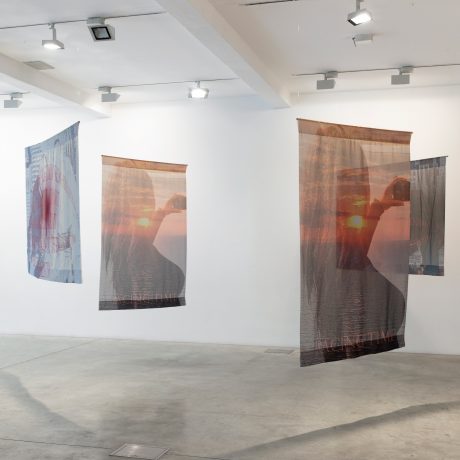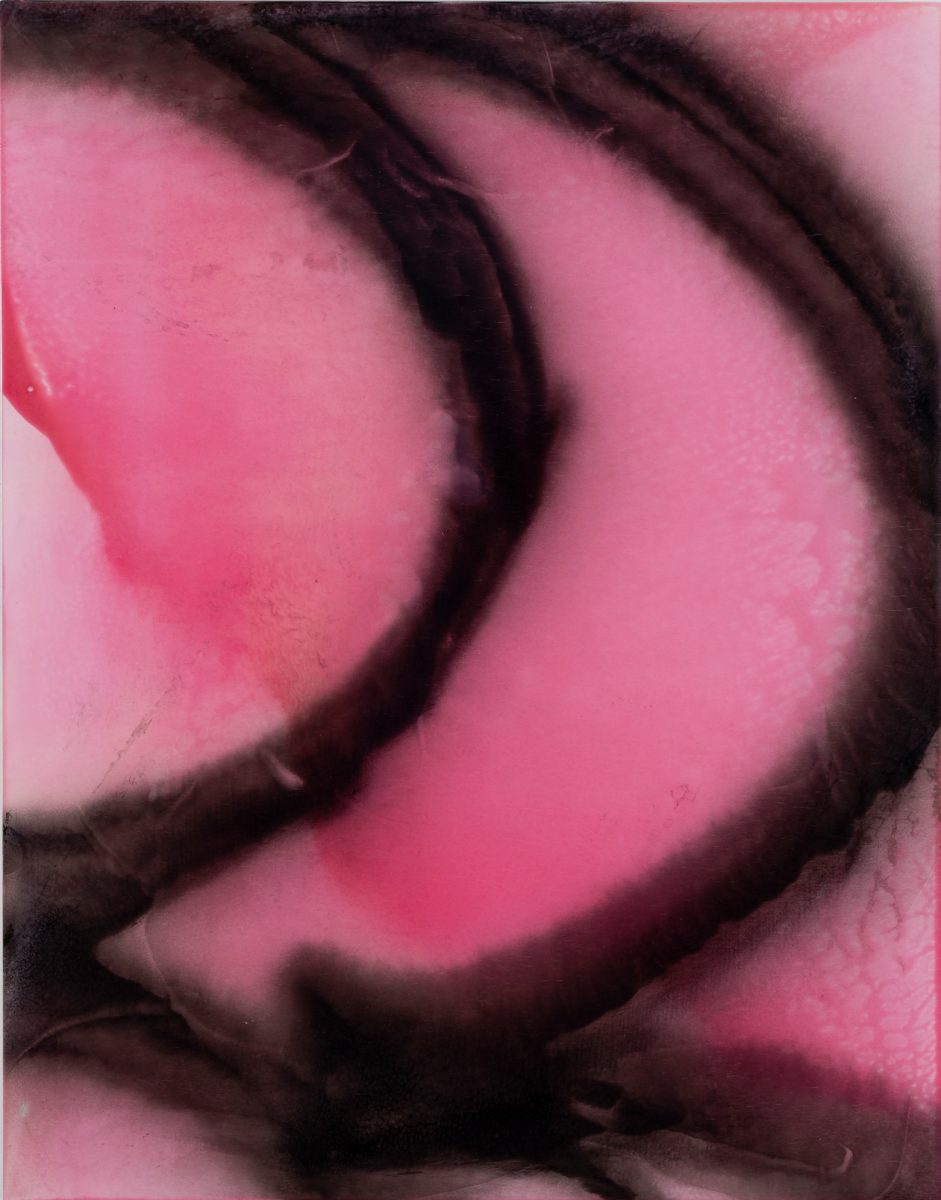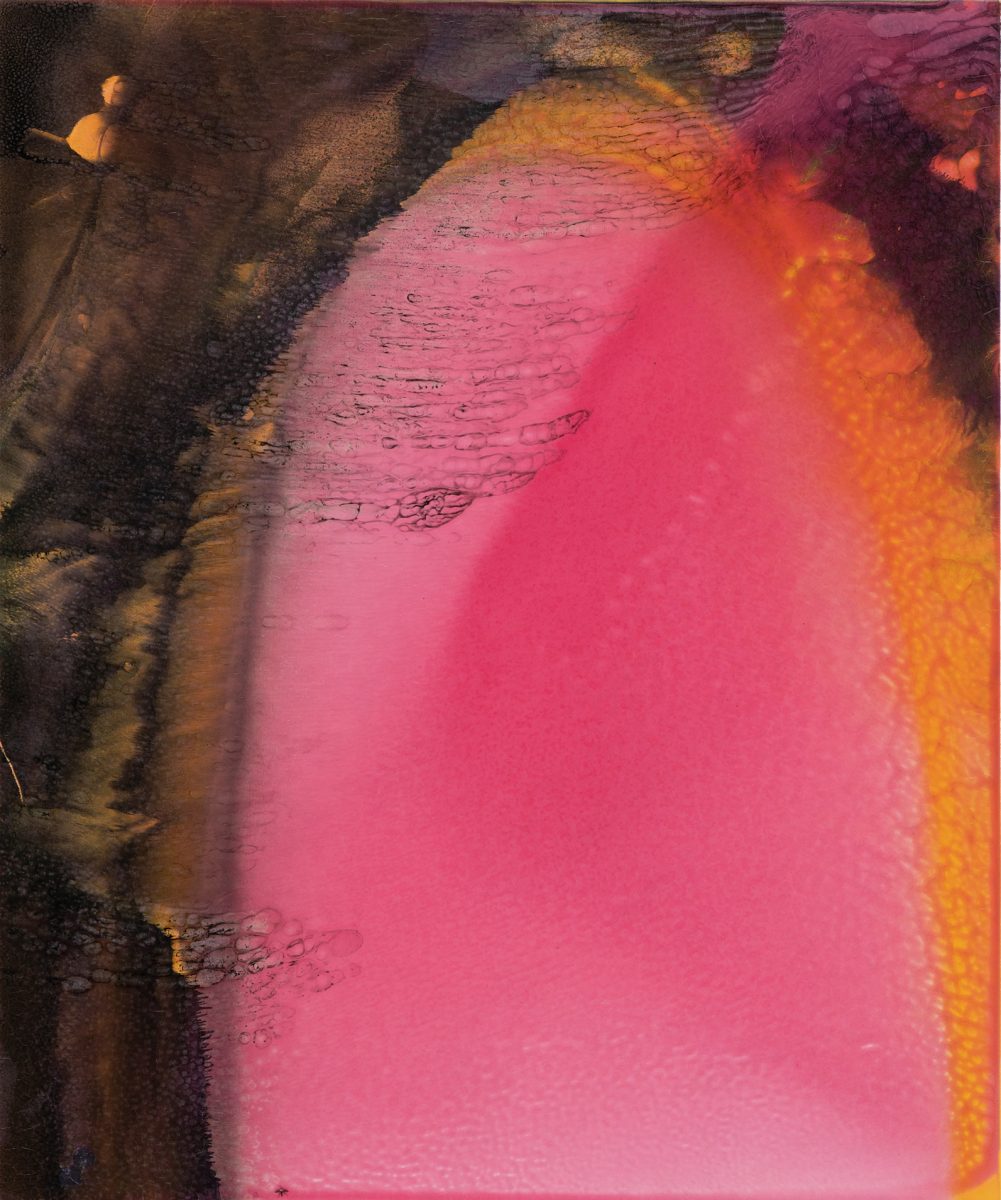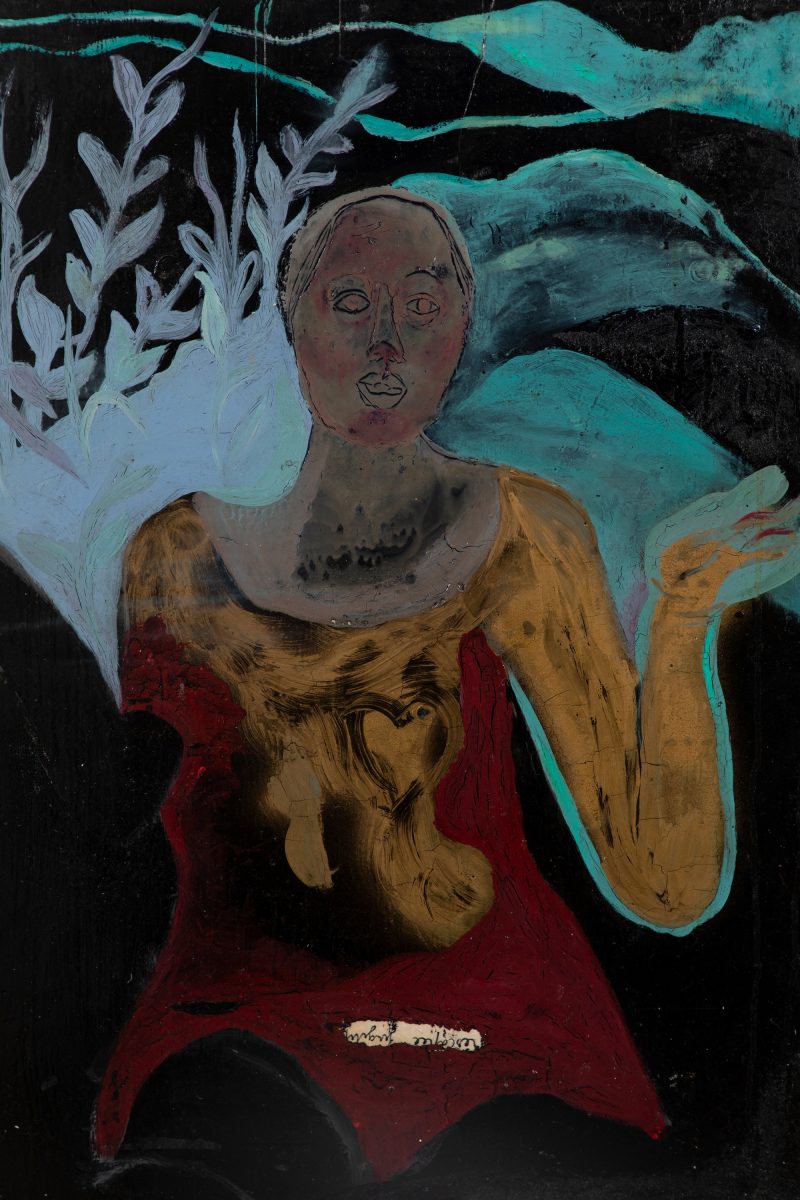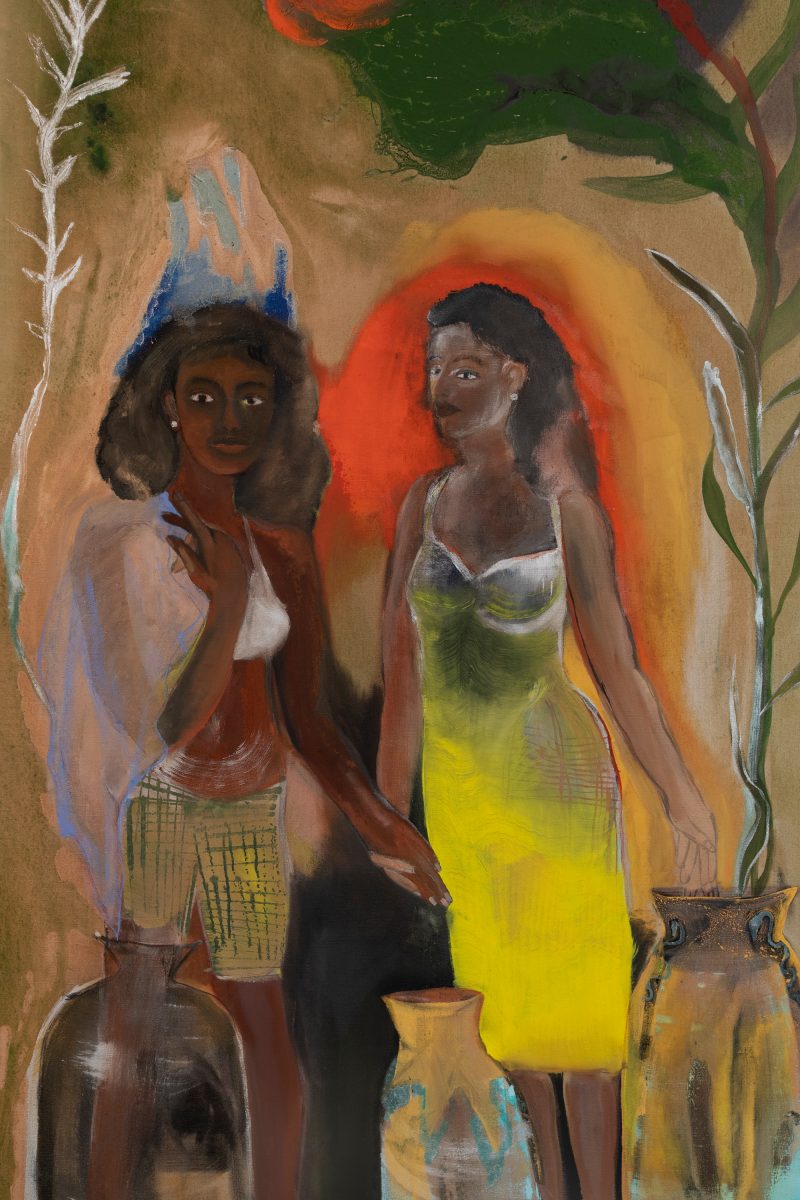
When British curator Ben Broome established his ongoing exhibition series, Drawing a Blank, in 2016, he had a clear vision. His goal was to democratise the gallery space for emerging artists and young audiences alike, while fostering a sense of community. No mean feat in an industry that many find as intimidating as it is impenetrable.
As such, the five previous iterations of the event have taken place in what Broome describes as “pseudo-unconventional locations like underground car parks, shop fronts, warehouse spaces”, deliberately non-commercial settings in London, New York and Paris.
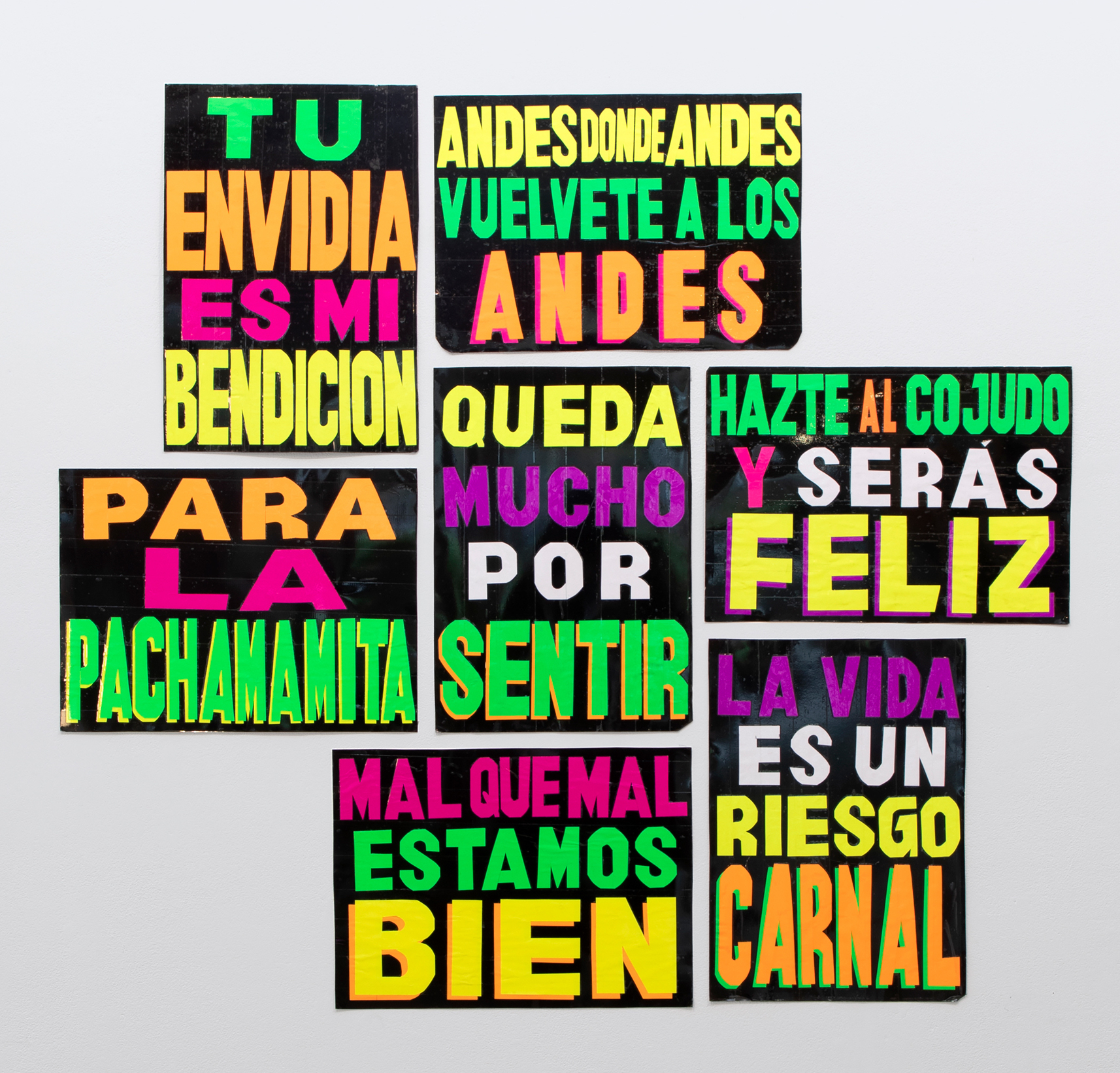
The latest show, currently on display at what was formerly The Parasol Unit in Shoreditch, marks a change of direction. It’s the first time Broome has embraced a more conventional gallery setting, an intentional move that he hopes will help “break down the barriers to entry and preconceived notions associated with the white cube”.
As with past Drawing a Blank exhibitions, Broome has put a number of established artists (like Rhea Dillon, Leon Xu and Christelle Oyiri) alongside lesser-known names, offering each artist agency over the work they show and involving all of them in the curation process. He has also organised a series of events, from DJ sets to performances, to accompany the physical show, breaking down the sense of formality that so often pervades commercial gallery spaces.
Here, we sit down with Broome and six of the exhibiting artists to discuss the value to be found in shifting the parameters of how we exhibit art, and the positive impact of thinking outside the box.

Ben Broome, Curator of Drawing a Blank
“This is the first show we’ve done in a proper gallery, which is a big step sideways. The reasons for that are twofold. First, I wanted to challenge myself: having never shown in this kind of space, I wanted to see if I could navigate something very minimal.
“I was interested in democratising the white cube. Commercial galleries don’t often feel like they’ve been created with young people in mind”
“I was also interested in the idea of democratising the white cube, a space I haven’t historically felt comfortable in. Commercial galleries don’t often feel like they’ve been created with young people in mind, they’re designed to appeal to collectors and can feel quite inaccessible to me and many of my artist peers.”

Gala Prudent
“Drawing a Blank helped me to understand that it’s possible to have a meaningful moment of collectivity without having to centre around a particular idea or ideology. I’ve found that there’s a surprising, deeply generative sense of community in exhibitions like this.
“As artists we are able to come together and discover connections between our work that are freestanding and organic, without being defined by the medium or the space. One piece which I’m showing is a set of photographs with writing, a work that is very close to me and to my own formulation of self. The organic evolution of this show, and the shared drive to produce and show work within it, has been a great context for that.”
Aspen Kincaid
“Art exhibitions should be about the experience. The problem that I see with most commercial galleries is that they have a physical space, where they have to pay rent, so they have to do ten to twelve shows a year and each of those shows has to make a certain amount of money. The consequences of capitalism enter into that equation.
“That fear can be alleviated by taking certain qualities of these white-walled spaces and merging them with a DIY attitude”
“If you don’t have a permanent space, you can be freer in your curation and choose artists who are less well known and who don’t need to provide a return on investment. Shows like this are able to provide a genuine survey of what younger artists are doing, rather than a survey of what’s making money at the time.”
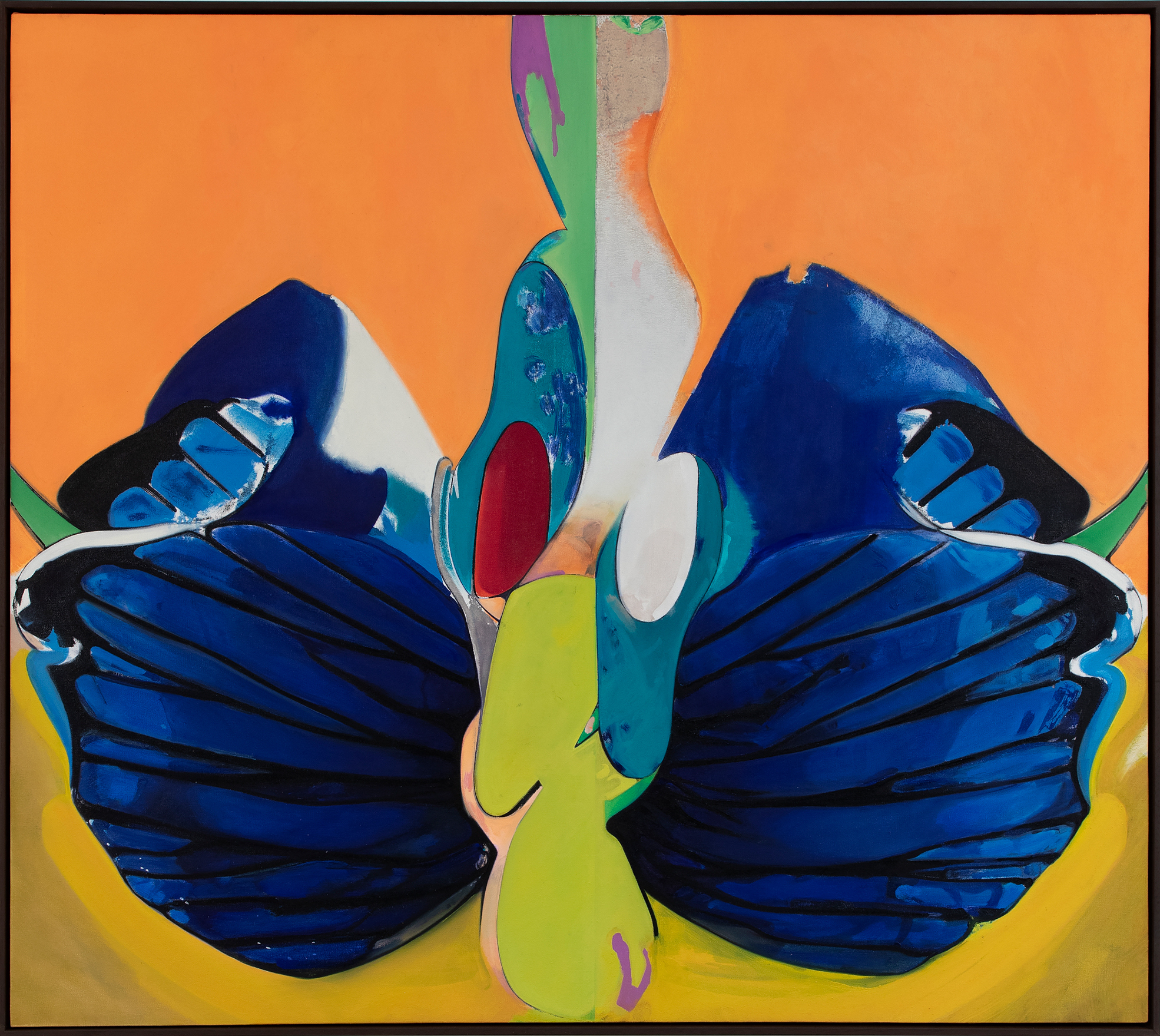
Alonso Leon-Velarde
“There’s a big difference between doing shows that are more DIY, where you’re trying to respond to spaces that people haven’t shown in before, versus coming into a white-walled space which is basically manufactured to display art and to prompt people to think about it in a more formal way. For many artists, making that jump can be quite threatening, but that fear can be alleviated by taking certain qualities of these white-walled spaces and merging them with a DIY attitude.
“Drawing a Blank takes a very community-oriented and fun approach that considers the artists’ needs, whereas more established galleries or project spaces tend to be driven more by market concerns. It’s also not a months-long show, so there’s a feeling of temporality usually associated with DIY shows. It becomes focused on a moment in time.”

Ebun Sodipo
“When I first started making work and showing, it was in community-led spaces in Black British communities, and I’ve slowly been extending out. Those spaces taught me to value the authenticity of my own expression. What you’re doing is appreciated and emphasised, it’s not watered down, or packaged to make it easier for audiences to understand.
“Even though this show is in a white cube, and will be a different experience, it’s the approach that will set it apart”
“I tend to eschew the white cube dynamic, but at the same time this exhibition is an opportunity to show in this nice symmetrical space. It is a context I haven’t presented physical work in before. As a trans artist, people often want me to do performance pieces, whereas Drawing a Blank gives artists the freedom to show their work and put themselves out there in a different way than we usually do, with less pressure.”
Inès Di Folco
“This is the second time I’ve shown with Drawing a Blank. The first time was in Paris in a warehouse in this very wealthy neighbourhood, where there’s absolutely nothing for Parisians of my age. I was amazed by how the exhibition and space could be so massive and at the same time so familial: it was about creating real relationships between all the artists
“Even though this show is in a white cube, and will be a different experience, it’s the approach that will set it apart. The main focus is not on selling: it’s about good conversations, and making connections. I prefer this to being at Art Basel, for example, where I’m by myself in the cold talking to no one, and go home without knowing anyone, even if I end up with more money in my bank account.”

Jesus Hilario-Reyes
“In the past, I’ve found it difficult to get my work shown outside of Chicago, the city that I studied in, because the institution I went to facilitated a lot of connection-making. Moving to New York, it was hard to establish myself without going to school there. Drawing a Blank has helped me to develop an international connection with my artwork, and with a community of artists that are really interested in each other’s work; that’s something I haven’t experienced with a traditional gallery set-up.
“The work that I’m showing is an animation: an amalgamation of dance floors of a specifically queer status, shown after a night of dancing. I’ve stitched together a 3D scan of these spaces to form a map and provide evidence of these ephemeral acts; it functions as a quilt. There are lots of overlaps between my practice and that of the other artists showing in this exhibition, and it’s refreshing that everyone is involved in the installation process. It feels much more familial than any other art-world experience I’ve had.”
Daisy Woodward is a Berlin-based writer and contributing editor at anothermag.com
